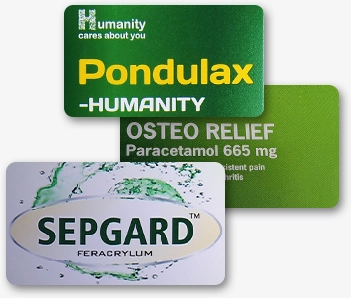What Are the Different Types of Printing in Packaging and How Do They Work?

Packaging printing is everywhere. It is what turns a plain box into a brand story. A chocolate bar wrapper that makes you pick it up. A medicine carton that tells you exactly what’s inside. It is more than visuals. It is communication, compliance, and sometimes, even safety.
When we talk about printing and types of printing, we are not just listing machines and inks. We are talking about how each method works for different industries. In packaging, the print process must match the product’s purpose whether it is for a snack pack, a perfume box, or a pharmaceutical carton.
Did you know?
By 2030, the global packaging printing market is set to cross $600 billion. That is a lot of printed boxes, labels, and pouches changing hands every day. (Source)
Why the Right Printing Method Matters for Brands?
The types of printing you choose affect how customers see you. High-quality printing builds trust. Poor printing can ruin first impressions, no matter how good the product inside.
For FMCG brands, colour consistency and finish help products stand out on crowded shelves. For pharma, precision printing ensures every dosage instruction is legible and every compliance mark is in place. In short – printing is part of your brand promise.
If you have been wondering what are different types of printing and why you should care, the answer is simple: your packaging is your silent salesperson.
What are the Different Types of Printing Methods in Packaging?
Below are the different printing types used in the industry. Each one comes with its strengths and best uses.
Offset Printing – The Industry Standard
Offset printing is one of the most reliable types of printing technology for packaging. It is precise. It is consistent. And it is perfect for high-volume runs.
It uses printing plates and transfers ink via a rubber blanket onto the carton. This keeps the print sharp and the colours accurate – batch after batch.
Best for:
- Premium FMCG cartons
- High-detail product artwork
- Large production runs where consistency matters
Screen Printing and UV Finishing – Adding Texture and Shine
Screen printing pushes ink through a mesh stencil. UV finishing cures it instantly under ultraviolet light. The result? A vibrant, tactile finish that lasts.
Perfect for adding selective gloss or highlighting specific brand areas, this technique also improves durability against moisture and scratches.
Best for:
- Premium branding zones
- Highlighting logos or product names
- Packaging that gets handled a lot
Did You Know?
Research shows 90% of first impressions of a product are based on packaging design alone. (Source: The Art Logic)
Flexographic Printing – Speed and Scale
Flexography uses flexible relief plates. It is fast, efficient, and works well for large-scale production on multiple substrates.
It is the go-to for printing on corrugated cartons, flexible pouches, and labels. While it is not as detailed as offset, it makes up for it in speed and versatility.
Best for:
- Corrugated shipping boxes
- Flexible packaging films
- Large production runs
MetPet Printing – Luxury Meets Function
MetPet printing laminates metallic polyester film onto paperboard before printing. It creates a foil-like or holographic shine. But it is not just for looks, it also acts as a barrier against moisture and aroma loss.
This method is widely used in luxury FMCG, festive editions, and personal care packaging where premium appeal matters.
Best for:
- Gifting products
- Premium FMCG
- Personal care and beauty items
Digital Printing – Quick and Custom
Digital printing does not need plates. The design goes straight from the computer to the packaging surface. That means faster turnarounds and easy personalisation.
It is great for small batches, seasonal designs, or test runs before committing to full-scale production.
Best for:
- Limited edition packaging
- Personalised product boxes
- Rapid prototyping
Foil Stamping and Embossing – Tactile Luxury
Foil stamping applies metallic foil with heat and pressure. Embossing creates raised textures that you can feel. Together, they turn ordinary cartons into premium experiences.
Commonly used for logos, borders, or key design elements, these different types of printing techniques are about creating a memorable unboxing moment.
Best for:
- Cosmetics and perfumes
- Gifting and luxury FMCG
- Special editions
Did You Know?
Gold foil stamping can increase perceived product value by up to 30%.
Braille Embossing – Inclusive Design
For pharmaceuticals, Braille embossing is more than a design choice, it is a requirement. It allows visually impaired consumers to identify medicines safely and independently.
Best for:
- Medicine cartons
- Healthcare packaging
- Compliance labelling
Security Printing – Protection Against Fakes
Security printing adds features like QR codes, holograms, microtext, and invisible inks. It is an essential layer of defence in industries like pharma where counterfeiting is a real threat.
Best for:
- Pharmaceuticals
- High-value FMCG
- Traceable products
Benefits of Each Printing Method:
| Printing Type | Benefits | Ideal Use |
|---|---|---|
| Offset Printing | Sharp details, consistent colours | Premium FMCG, high-volume runs |
| Screen + UV | Moisture resistance, tactile finish | Luxury, high-handling products |
| MetPet | Metallic shine, barrier protection | Festive, beauty, gifting |
| Flexography | High speed, versatile | Corrugated, flexible packaging |
| Digital | Customisation, short runs | Seasonal, personalised designs |
| Foil & Embossing | Luxury feel, tactile branding | Cosmetics, premium FMCG |
| Braille Embossing | Accessibility, compliance | Pharma packaging |
| Security Printing | Anti-counterfeit, trackable | Pharma, premium goods |
How to Choose the Right Printing Method for Your Brand?
When exploring various types of printing, think about:
- Your product – Is it luxury, mass-market, or regulated?
- Your audience – What will appeal to them visually?
- Your run size – High volume or limited edition?
- Your sustainability goals – Eco-friendly inks, recyclable boards.
For Example: A luxury skincare brand might pick MetPet with foil embossing for maximum shelf presence, while a snack company could go with offset printing for vibrant colours at scale.
Over to You?
If you have ever asked, “What are the types of printing for packaging?” or “What are different types of printing and where do they fit?”—the key is matching method to mission.
By understanding the different types of printing and how they work, you can create packaging that protects, promotes, and persuades. The right print choice can make your brand unforgettable—both in-store and in the customer’s hand.
<< back to blog

